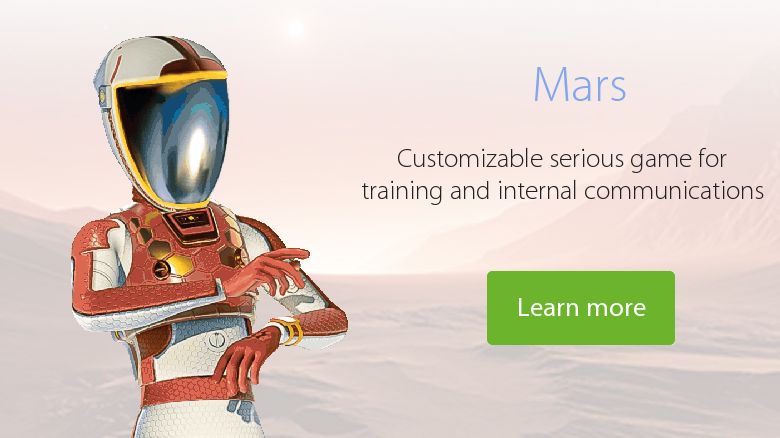Staff training programs are vital to any successful company. All companies need to have top professionals, support them in their development, and equip them with the necessary tools and skills to best perform in their roles. This is particularly true in today’s technologically changing times.
There are numerous benefits to implementing staff training programs. On the one hand, it is possible to take on any shortcomings within the organization, achieving better results (more sales, more customers, greater productivity, better customer service, fewer expenses, etc.) for the company as a whole. On the other hand, offering quality staff training programs is a way to attract and retain talent, improve the work environment, and ensure that your employees continue to progress in their careers. This should translate not only into a happier workforce but also more effective onboarding processes and lower resignation rates.
Despite all these advantages, developing a good staff training program is no easy task. To help you on this mission, we’ve prepared a guide in which we explain how to do it successfully, step by step:
Step 1. Identify your company’s needs
It is most essential that you identify a need within your company or a business goal you’d like to contribute to. This should be the start and end of your entire staff training program. Whatever the outcome, don’t forget that your number one priority is to respond to that need and help in achieving those business goals.
In doing so, you can work towards the set goal to the fullest extent (using a metric managed by the company for some time, if possible). This may be an increase in profits, greater efficiency, a reduction in costs, in-depth knowledge of a new product, or a reduction in fines for non-compliance.
In this initial phase, it is important to talk to the steering committee, the CEO, and the senior managers of any departments involved. The more you know regarding the company’s real needs, the easier it will be for you to design a training program that helps employees to better do their jobs. Also, having the support of management can be a great help in communicating and involving the entire staff.
Step 2. Define the learning goals of your staff training program
Once you know what you want to achieve, you’ll need to identify how. You must analyze what kind of tasks can be done better, and the knowledge, skills, and attitudes that employees must acquire in order to improve the company’s results. This element is often referred to as a performance gap; your mission will be precisely to close this gap.
Sometimes, the gap may be to master a new technology or software, develop leadership skills, or transfer knowledge regarding a new law or product. If, for example, your company’s sector is undergoing changes in the type of contracts it uses or the type of client to be persuaded, it’s probably a good idea to improve the sales team’s negotiating skills so they can meet this new challenge.
To help you define the learning goals of your staff training program, we recommend following the SMART model:
- Specific. Employees’ knowledge, skills, and attitudes must be accurately defined, specific, and understandable by all parties.
- Measurable. The only way to evaluate a training program’s effectiveness is to measure it. Make sure you have a way to measure the training results and achievement of the learning goals from the start.
- Achievable. Employees must be able to realistically achieve the goals defined in the staff training program. Don’t create expectations that are too high, as they will only generate frustration. Be realistic.
- Relevant. Learning goals must be important for the company, but also for the employee’s role.
- Time-bound. You must establish a limited period of time in which employees can achieve the set learning goals.
Step 3. Identify who the staff training program is aimed towards
After implementing the two previous points, it’s now time to define the training audience.
At this point, the most important thing is to select those individuals (or teams) that will have the greatest impact on achieving the company’s goals (defined in step 1). Remember, your mission is to positively impact the company, so identify any employees who can make a difference and who are most aligned with your goals.
In addition, carry out an analysis of what these employees are like (age, education, professional profile, etc.) and what their needs are. Don’t forget to find out their training program priorities (do they prefer classroom or online training? When would they like to do the training? At what time of the year is best for them?), which will certainly help you with the next steps.
Involve them as much as you can in the staff training program, since the best way to ensure its success is to have the support of the employees themselves. If you design a course directly benefiting them (and you can get them to see it that way too), you’ll have built a very solid foundation for a successful training program.
Step 4. Select or develop the most suitable staff training program
This is one of the most sensitive steps, and it’s where you will probably invest the most time. Once you have identified the company goals you’d like to contribute to, the specific learning goals, and decided on who the training is for, you’ll need to find courses and content to cover the previously mentioned points.
There are hundreds (if not thousands) of options that you should analyze, depending on the characteristics of your company and its employees. The following general tips can also help you decide:
- Consider the format. One of the most important decisions has to do with the type of training you’re offering. It can be classroom-based (through masterclasses, workshops, group discussions, etc.) or online (tutorial videos, PowerPoint presentations, video games, readings, practical documents, chats, etc.). Make sure you choose the one that best suits your learning goals and your audience.
- Use blended learning. Combine different formats if possible. You can take advantage of the best of the online and offline world to ensure you reach your whole staff.
- Encourage learning by doing. Facilitate practical experience whenever possible. It is scientifically proven that the brain is stimulated more when we learn by doing. Include lots of hands-on exercises and use simulators to increase the impact of your staff training programs.
- Facilitate feedback and interaction. Put an end to boring classes where students just sit in their chairs listening for hours on end. If you really want your employees to learn, encourage interaction with content and teachers, always leave room for questions, and make sure any questions are cleared up. This should also apply to online training.
- Divide the content and give the training in doses. Regardless of the complexity of your training program, try to divide the learning content into small sections (or well-defined time periods). In this way, you will allow employees to better organize their time and also give them a chance to internalize and digest the knowledge.
- Give your employees freedom. In many cases, the best way to ensure successful training is to give students complete freedom. The more autonomous and free they are, the more responsible they’ll feel for the results. To do this, offer several training opportunities they can choose from, suggest they look for their own courses related to the company’s goals, or even offer monetary assistance so they can purchase the training courses they see fit.
- Use gamification and video games. To fight boredom and a lack of engagement, don’t hesitate to incorporate gaming techniques or video games into your training programs. You will succeed in piquing employee interest, motivating them, and, above all, improving the training’s learning effectiveness.
You may be interested in: Free ebook – How to successfully implement a video game-based learning program.
Step 5. Communicate and publicize your training program
While this is often overlooked by human resources and training & development professionals, don’t forget to design an ambitious communication and marketing campaign. Remember, there’s nothing more useless than a well-designed training program that no one has ever heard of.
To prevent this from happening, we recommend following these tips:
- Explain the goals of the training program in detail, the time they have to complete it, the benefits it will offer them, and any technical and logistical aspects they must take into account.
- Choose a provider with communication and marketing materials so you can promote your training programs within the company (posters, trailers, videos, emails, etc.).
- Be visual. Don’t send long texts that nobody’s going to read. Use infographics, videos, and other graphic materials to attract your employees’ attention.
- Use all the technological channels and resources available to you: email campaigns, videos, WhatsApp, phone calls, social media, etc.
- Emphasize the personal and professional benefits that the training program will give employees.
- Be original. Break new ground in your communication campaign. Use humor, mystery, and surprise.
- Hold a training program launch event to give it more importance, mobilize employees, and cover all the previously-mentioned points.
Step 6. Implement your training program
After defining the training goals and informing employees, the moment of truth has arrived: kick off your training program, and, above all, do it successfully.
First off, make sure that all the infrastructure and logistics are prepared. If you need a venue for a classroom-based program, book it in advance; check that computers, video players, and any other software are in working order (check as many times as needed), cover all teachers’ needs, especially if they have to travel or have any special requirements, make sure that all equipment used for hands-on classes is available and working properly.
If you select an online training program, it is particularly important that your Learning Management System (LMS) runs smoothly and that everything is ready to launch the training. Do it fluidly; monitor the students, and then evaluate the results. All the time you invest in making sure the LMS adapts to your needs will be the time you won’t have to spend solving problems in the future. Also, try to create the appropriate notifications so that you can follow the implementation of the training program in real-time and respond to any urgent issues.
Don’t forget to monitor student progress throughout the entire training (weekly, if possible). You can divide this task among several training managers or ask the managers for help. It is imperative that you make sure the training program has been successfully launched, employees are participating in classes (or entering the LMS), and they are progressing according to schedule. If this is not the case, identify the problem and solve it as soon as possible.
In addition, you should have the general support of managers or team leaders. They can help you not only monitor the training programs, but also transmit information to the employees, encourage them to take the courses, and, above all, allow them time to complete the training.
Step 7. Get feedback and evaluate the training program
Once the staff training program has been completed, it’s time to get as much feedback as possible from employees and, most importantly, evaluate its effectiveness.
To do this, we recommend the famous model by Donald Kirkpatrick (adapting it as needed). It is divided into four parts, as laid out below:
- Reaction. The first way to evaluate your training program is through interviews and surveys. Ask your employees if they liked the training, if they would recommend it to their peers, and what they have learned. It’s important that interviews and surveys are conducted before, during, and after the training program.
- Learning. In this phase, you have to evaluate if the employees have achieved the learning goals established in step two. This is where you’ll give the exams, tests, or practical tests that you’ve defined in order to precisely evaluate whether or not the training has improved their performance.
- Behavior. Sometimes a training program seeks to change employee habits, behavior, or general attitude. Measuring this requires a longer period of time and several exams at various times after the training program. Team managers can often help you in evaluating these behavioral changes throughout the organization.
- Results. The time has come to go back to step one. Has the business goal we set for ourselves been achieved? Has the company as a whole improved in the covered areas thanks to the training? To find out, you’ll have to analyze the specific metrics you targeted at the start of the training.
All this data should not only help to evaluate the training program you’ve offered but also turn this feedback into a learning tool that will serve to make improvements in the future. Surveys and interviews should, therefore, include qualitative and open-ended questions where employees (and the management team itself, CEO, and senior managers) can contribute ideas and advice for future training programs.
If you follow this step-by-step guide and strive to keep improving in each section, you’ll be able to successfully design staff training programs with a great impact on your company, thus helping to achieve its goals.








Eli Richardson
Eli Richardson
It’s great that you talked about training programs and how to adapt them to a company’s needs. In my opinion, any business needs to provide a training program to their employees. If I were to run a restaurant, I’d make sure that my employees take a specific training program for their needs. Thanks for the information on quality training programs and how to achieve one.